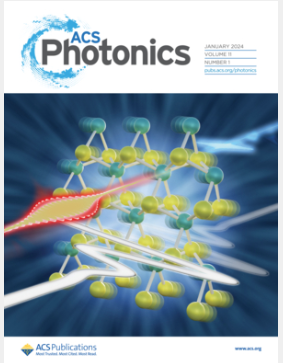Phase-Dependent Energy Dissipation for Dynamic Emissivity Modulation Using Quantum Dots Near Metallic Surfaces
IF 6.5
1区 物理与天体物理
Q1 MATERIALS SCIENCE, MULTIDISCIPLINARY
引用次数: 0
Abstract
Recent advances in micro- and nanophotonic fabrication techniques have enabled precise control over thermal emissivity, unlocking a variety of intriguing applications. With self-adaptive features, dynamic tunability promises transformative potential but often depends on specialized materials with infrared optical properties responsive to external stimuli, limiting material choices and design flexibility. Herein, we introduce a new framework for dynamic emissivity modulation that exploits the phase-dependent energy dissipation, where the electromagnetic phase controls the amplitude of the total electric field and, consequently, the dissipation rate of the thermal emitter near metallic surfaces. Employing a bilayer system composed of Ag2Se quantum dots (QDs) and a LiF spacer layer on a metallic substrate, we experimentally demonstrate a tunable range of spectral emissivity (Δϵλ) of ∼0.7 and a tunable range of total integrated emissivity in the 8–13 μm waveband (Δϵ) of ∼0.5. The theoretical result also suggests that a dynamic range of the total emissivity as large as 0.6 is feasible by replacing the spacer layer with thermal-responsive polymers, electroelastic materials, magnetoelastic materials, or other phase modulating layers. This design provides a versatile platform for integrating various stimuli-responsive materials to enable dynamically tunable thermal emissivity, paving the way for advanced applications in self-adaptive thermal management and smart thermal systems.

金属表面附近量子点动态发射率调制的相位相关能量耗散
微光子和纳米光子制造技术的最新进展使热发射率的精确控制成为可能,开启了各种有趣的应用。由于具有自适应功能,动态可调性有望带来变革潜力,但通常取决于具有红外光学特性的专用材料,这些材料对外部刺激的响应限制了材料的选择和设计灵活性。在此,我们引入了一种新的动态发射率调制框架,该框架利用相位相关的能量耗散,其中电磁相位控制总电场的振幅,从而控制热发射器在金属表面附近的耗散率。利用金属衬底上由Ag2Se量子点(QDs)和LiF间隔层组成的双层系统,我们实验证明了光谱发射率(Δϵλ)的可调谐范围为~ 0.7,8-13 μm波段(Δϵ)的总集成发射率可调谐范围为~ 0.5。理论结果还表明,用热响应聚合物、电弹性材料、磁弹性材料或其他相位调制层代替间隔层,总发射率的动态范围可达0.6。该设计为集成各种刺激响应材料提供了一个多功能平台,以实现动态可调的热发射率,为自适应热管理和智能热系统的先进应用铺平了道路。
本文章由计算机程序翻译,如有差异,请以英文原文为准。
求助全文
约1分钟内获得全文
求助全文
来源期刊

ACS Photonics
NANOSCIENCE & NANOTECHNOLOGY-MATERIALS SCIENCE, MULTIDISCIPLINARY
CiteScore
11.90
自引率
5.70%
发文量
438
审稿时长
2.3 months
期刊介绍:
Published as soon as accepted and summarized in monthly issues, ACS Photonics will publish Research Articles, Letters, Perspectives, and Reviews, to encompass the full scope of published research in this field.
 求助内容:
求助内容: 应助结果提醒方式:
应助结果提醒方式:


